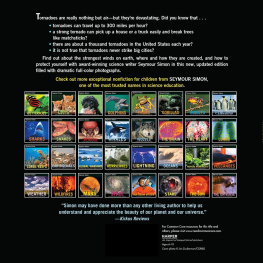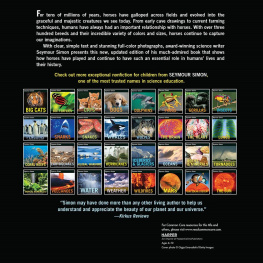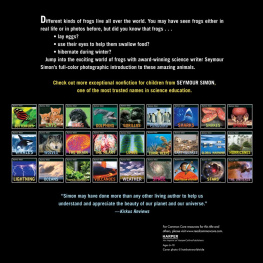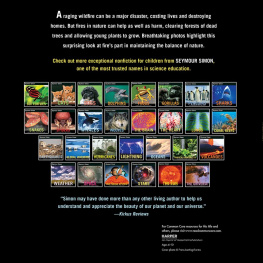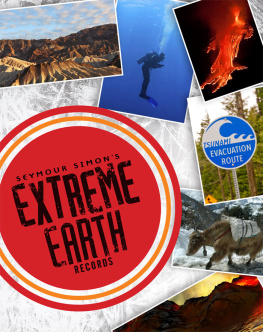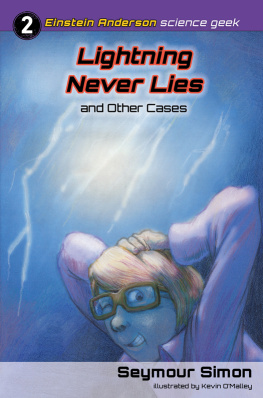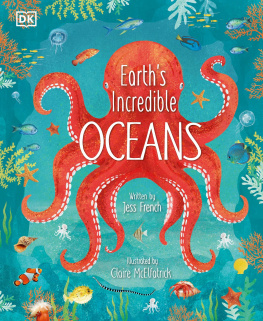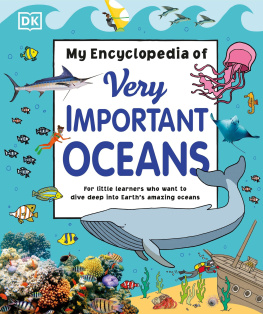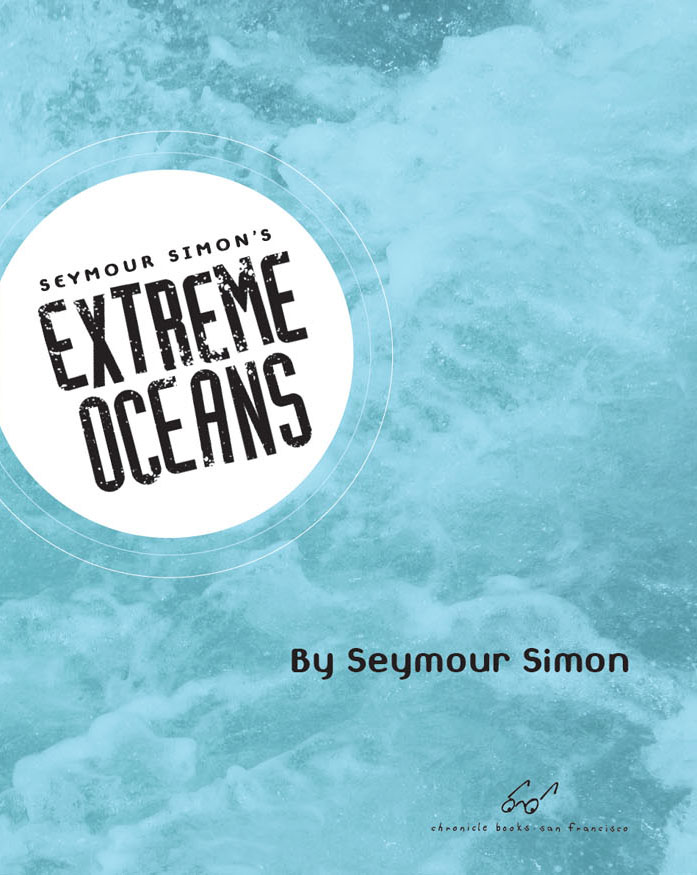
In thankful memory of Rachel Carson and her wonderful book The Sea Around Us , which made me realize that I wanted to become a writer.

Text 2013 by Seymour Simon.
All rights reserved. No part of this book may be reproduced in any form without written permission from the publisher.
Page 57 constitutes a continuation of the copyright page.
Library of Congress Cataloging-in-Publication Data available.
ISBN 978-1-4521-0878-0
Chronicle Books LLC
680 Second Street, San Francisco, California 94107
www.chroniclekids.com
Table of Contents
Introduction to Extreme Oceans
Earth is sometimes called "The Blue Planet" because of the oceans. Oceans cover about seventy percent of Earth's surface, and the average depth of the oceans is more than two and a half miles. No other planet in our solar system has even a trace of liquid water on its surface.
When I was a kid in second grade I wrote about space monsters from other planets. But, the ocean space on Earth is largely unexplored and provides ninety-nine percent of the living space on our planet. The oceans are the largest space in the universe known to be inhabited by living creatures. Scientists think that there are ten million ocean creatures yet to be discovered.
Of course, the space monsters I wrote about in second grade were fiction and the ocean space I write about in this book is nonfiction. Nonetheless, many of the real life-forms found in the real ocean could easily be mistaken for fictional space monsters from distant planets. Take a look at the colossal squid or the crown-of-thorns starfish pictured in this book. The oceans and the animals that live there are just as strange as any space monster I ever imagined. So, come along with me and let's begin to explore the outer limits of Seymour Simon's Extreme Oceans.
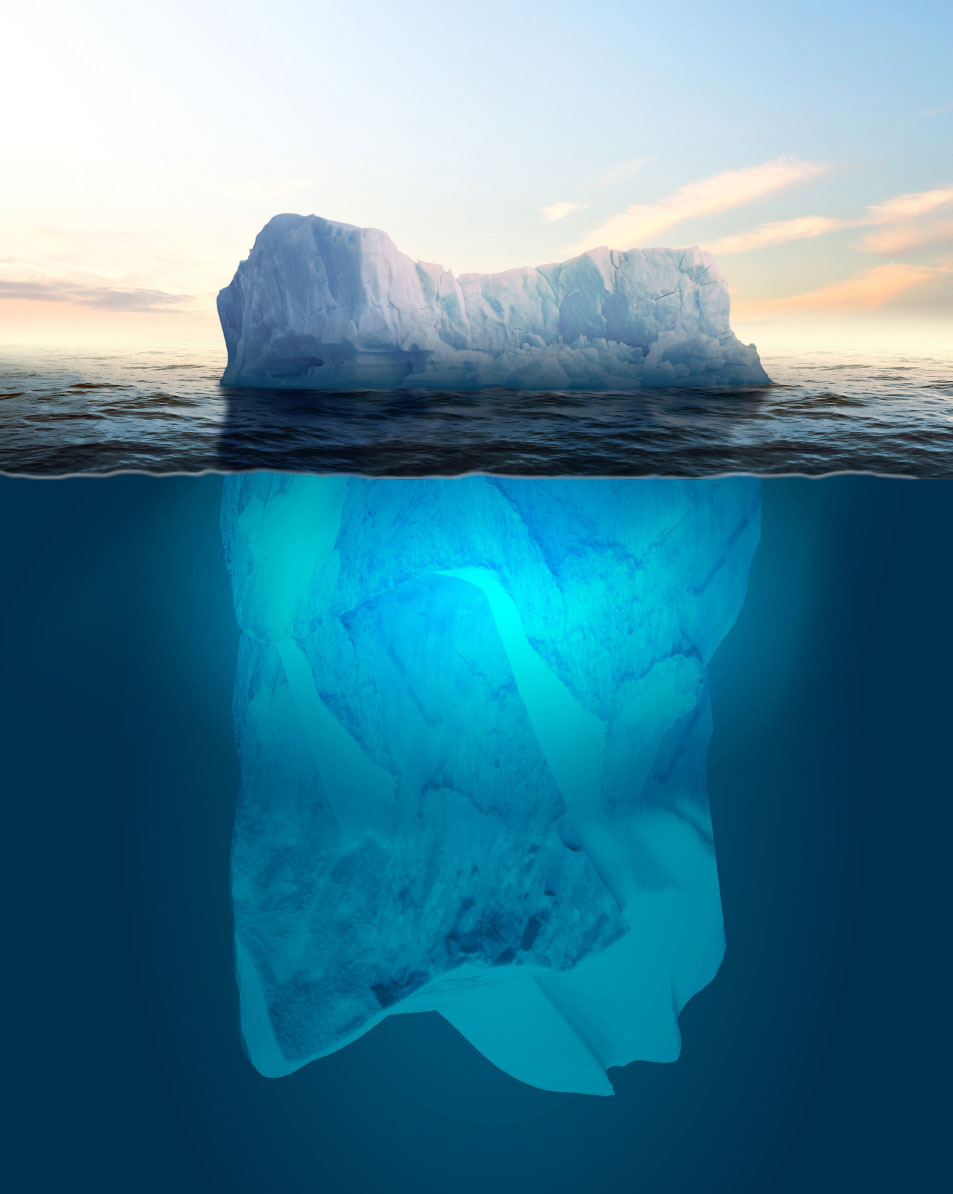
Warm and Icy Seas
Perhaps we should have named our planet Oceans instead of Earth. We are the only planet in our solar system with liquid water on its surface.
Scientists report that there are more than 332 million cubic miles (1,386 million cubic kilometers) of water on our planet. Thats a huge amount of water! The number is so large that its difficult to even comprehend. Picture this: If all the water of the oceans was poured on top of the United States of America, the water would cover the entire country in an ocean with a depth of 90 miles (145 kilometers). The water would reach high above the lower atmosphere, all the way up to the part called the thermosphere, where some satellites orbit Earth.
There are five major oceans: the Pacific, Atlantic, Indian, Southern, and Arctic Oceans; these oceans plus many smaller seas, bays, gulfs, and straits cover 71 percent of the planet and contain 97 percent of its water. The Pacific Ocean is the largest and covers a third of Earths surface. The Atlantic Ocean is the second largest and separates North and South America from Europe and Africa. The third largest is the Indian Ocean, located south of Asia and east of Africa. The Southern Ocean surrounds the continent of Antarctica, in the south polar region. The mostly frozen Arctic Ocean covers the north polar region.
Depending upon location, ocean water temperatures range from cold to warm. The Arctic Ocean water is so cold that a thick layer of ice covers most of the ocean. Seawater freezes at approximately 28.4F (-2C). As seawater freezes, the salt is forced out of the ice, making sea ice less salty than the seawater around it. This means when ocean ice melts, it is fresh enough to use as drinking water. In the spring, polar bears drink the melting water that forms in ponds on ice floes (sheets of floating ice). The Antarctic sheet of ice covering the South Pole and much of the Southern Ocean is the biggest slab of ice in the world. It is larger than the United States, Mexico, and Central America combined. In some spots, the Antarctic ice sheet is more than 3 miles (4.8 kilometers) thick. Beneath this enormous sheet of ice are mountains and fjords that have been sculpted by the moving ice for millions of years. If the Antarctic ice sheet melted, the land under the ice would be a seabed. There is enough water in the ice sheet to feed all the rivers in the United States for approximately 17,000 years.
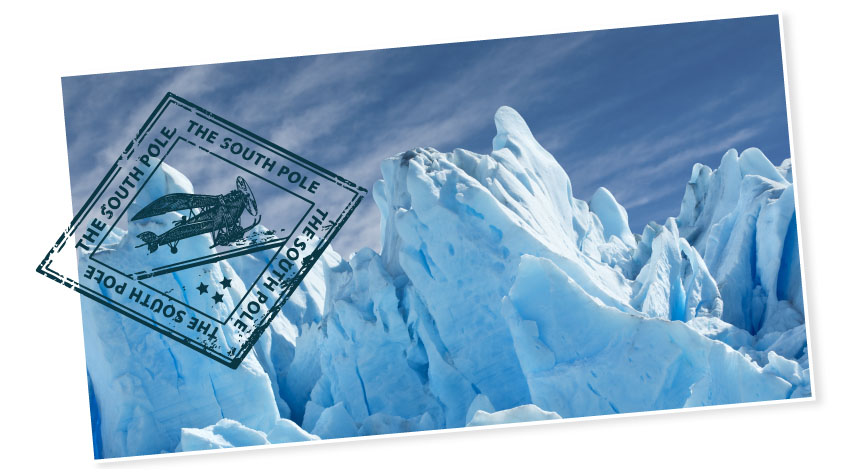
Warm ocean waters are found mostly in the tropics (near the equator), in the central parts of the Pacific and Atlantic Oceans and much of the Indian Ocean. The water temperatures are often higher than 68F (20C) and the water stays warm for most of the year. The warm ocean waters of the tropics drive changes in Earths climate and weather patterns. Heavy, warm, year-round rains are a feature of warm oceans and the surrounding lands. Coral reefs are able to grow in the warm waters of tropical oceans, and rain forests thrive on the nearby landmasses.

Dangerous Icebergs
Huge pieces of ice called icebergs often break away from glaciers, ice sheets, and other icebergs. Some icebergs are taller than the Statue of Liberty and can be as large as the states of Vermont or Rhode Island. Only a small part of an iceberg floats above the water. Approximately seven-eighths of the berg is hidden beneath the ocean surface, making the hidden parts of a berg dangerous for ships that travel too close. In 1912, the ocean liner Titanic , called the safest ship in the world, struck a large iceberg and sank in less than three hours. More than a thousand people died in the icy waters of the North Atlantic. Today, satellites track the giant icebergs that break off melting Arctic and Antarctic ice sheets and warn ships not to sail too close.
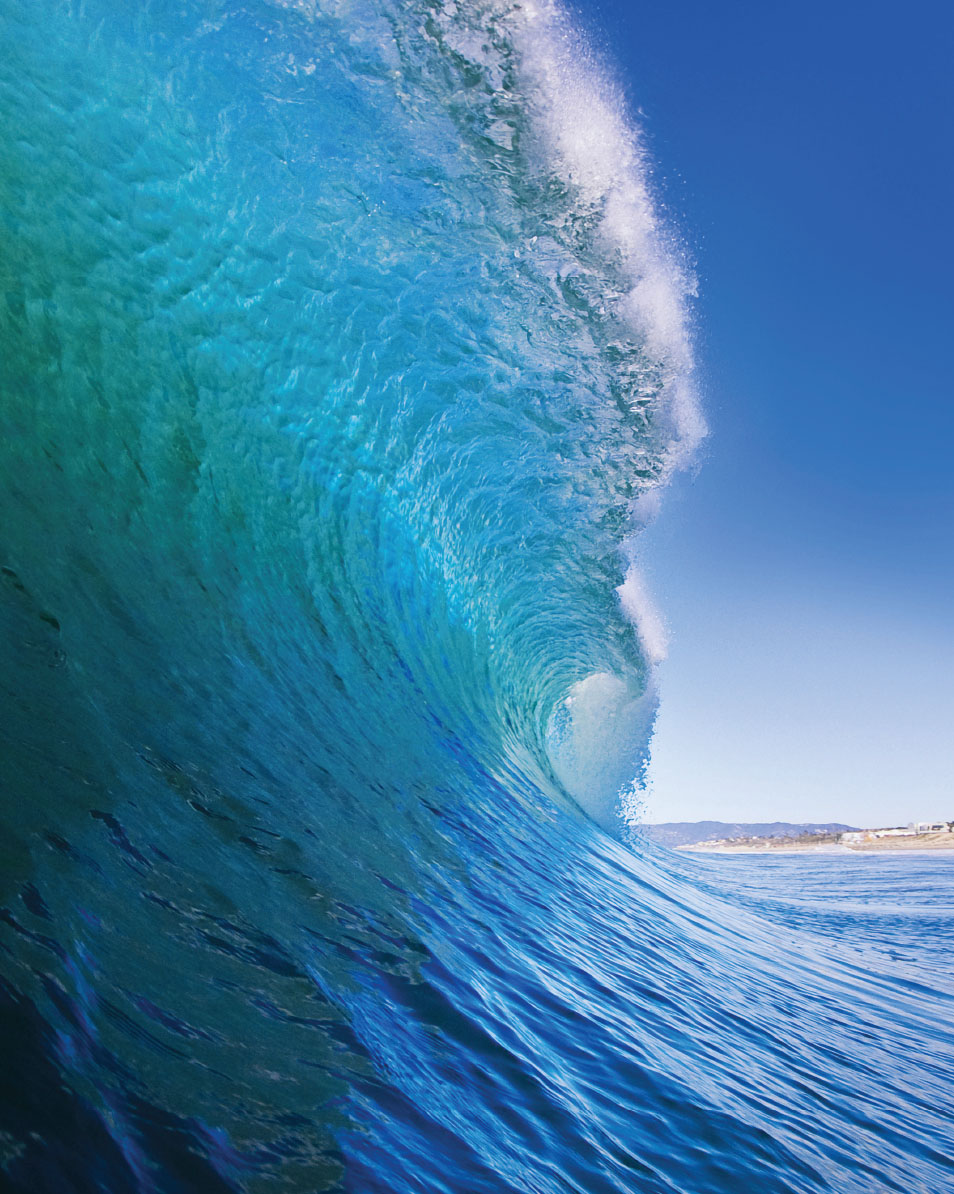
Big Waves and Giant Tides
Imagine yourself sitting on a blanket with the breeze blowing as you watch the oceans waves crash onto the beach. As the day goes by, the waves roll in higher and higher on the shore. Why do you have to move your blanket farther back from the water even though the waves are still the same size? The tide is coming in, bringing the water closer and closer to you. Although they are related, waves and tides are not the same thing.
The wind causes waves to form in bodies of water. When winds blow across the surface of an ocean, lake, or pond, ripples are formed. The ripples then grow into waves as the winds blow harder and longer. The size of the waves depends on several factors: wind speed, how long the wind is blowing, and the fetchthe distance that the wave travels as it forms. Ordinary big waves are caused by strong winds that blow for a long time over many miles of waters. (Tsunami waves are formed in a different way.) You can make your own tiny waves by blowing across the water in a bathtub. Blow harder to make bigger waves.
Tides are the daily rise and fall of water in oceans and large lakes. Tides are caused by the gravitational pull between Earth, the moon, and the sun. Even though the moon is smaller than the sun, it is so much closer to Earth that its pull on the water is actually stronger. As our planet rotates, ocean waters closest to the moon are pulled outward in the direction toward the moon in a traveling bulge called high tide. There is a second daily high tide on the side of Earth opposite the moon. The high tide on the opposite side of Earth happens because the ground beneath the ocean itself is being pulled toward the moon, while the ocean waters pull away from Earth because of inertia. Because of the double bulges, most ocean shores have high tides every 12 hours and 25 minutes. Midway between are the low tides of the day.
Next page








